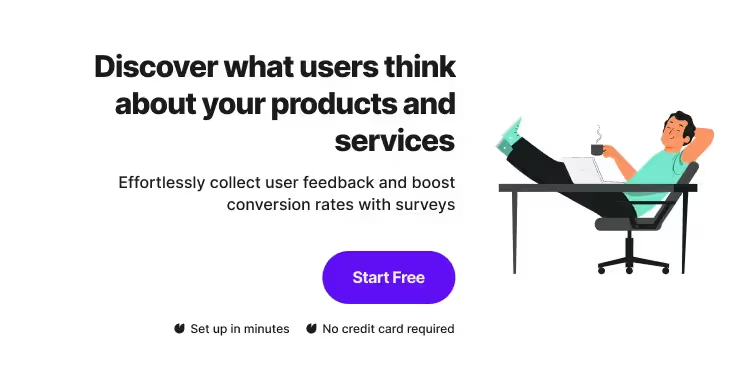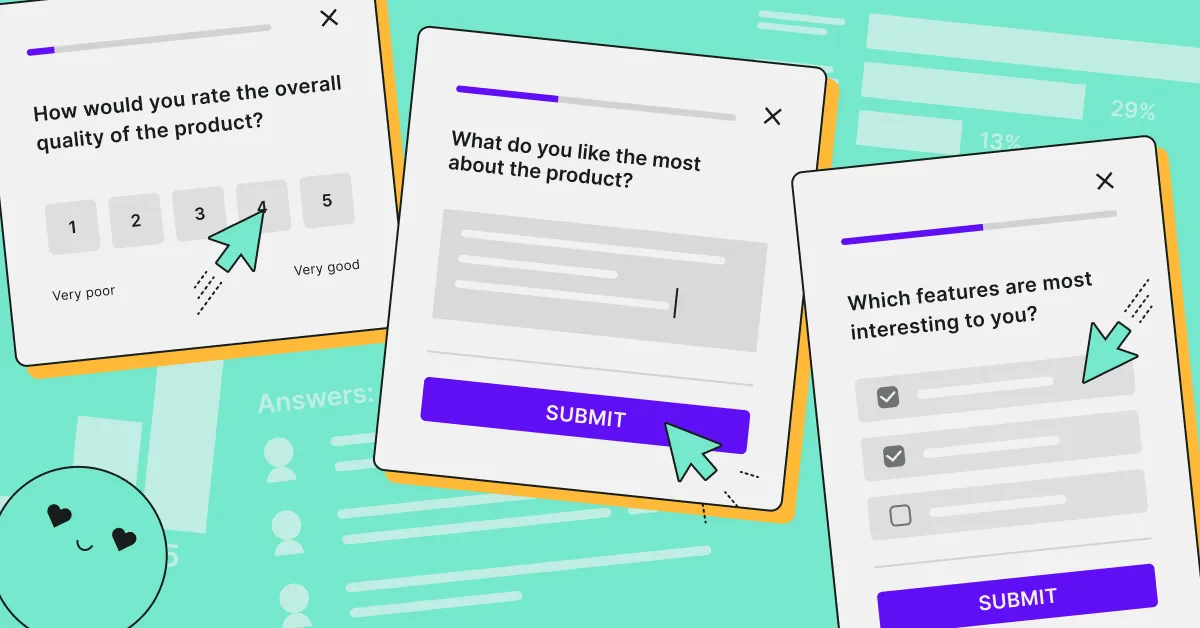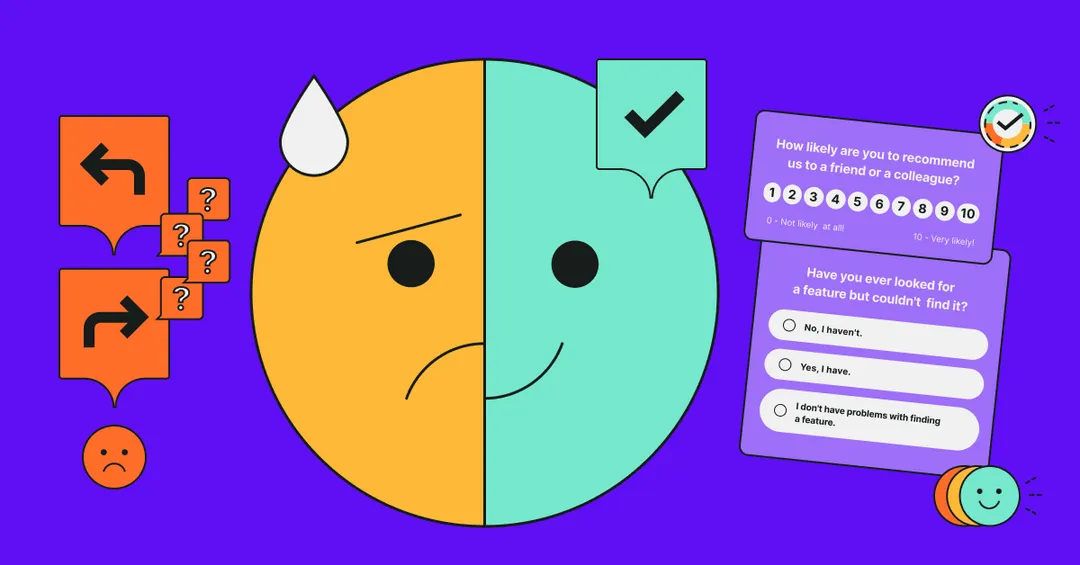Imagine designing a product without understanding your users. Sounds like a recipe for disaster, doesn't it?
That's where user personas come in. Based on real user data, these fictional characters ensure your design decisions are user-centered and empathetic.
In this blog post, we'll guide you through the role of user personas in design, the different types of personas, a 7-step process to create them, and how they should evolve over time.
The role of user personas in design
User personas are essential to creating a strong product design. They help us gain more insight into our target audience and influence our design decisions.
By creating personas, you can build empathy with users and align your design team and stakeholders around a shared understanding of user needs and behaviors.

In turn, this ensures your design is user-centered and relevant to your audience.
Personas are more than just pretty faces; they represent the most important user groups of your product, allowing you to focus on their pain points, needs, and preferences.
They can also bring user research findings to life, ensuring your design decisions are grounded in real data and not just gut feelings.
Let's dive deeper into the three main benefits of UX personas: building empathy, user-centered decision-making, and aligning teams and stakeholders.
If you'd rather jump right into collecting user data, check out this user activation survey template:
Building empathy with users
A realistic character, based on actual user research, helps designers better understand and empathize with their target audience. By creating a persona, you can visualize your users, humanize them, and bring their needs to the forefront of your design process.
This deeper understanding of users ensures your product resonates with your audience and addresses their pain points.
But it's not just about having a realistic character; it's also about the details.
In a UX persona, the personal background should include details like age, gender, ethnicity, education, persona group, and family status.
These demographic details, along with the user's psychographic profile, provide a comprehensive understanding of why users act the way they do and, ultimately, why they use your product.
User-centered decision making
The ultimate aim of a user persona is to identify the driving force that encourages action, answering the question: what do users need or want to achieve with your product?
By focusing on user personas, you can prioritize which features and improvements will have the most impact on your users. This ensures your design decisions are user-centered and your product remains relevant and aligned with their needs.
Persona documentation should include scenarios written from the persona's point of view, describing use cases that are likely to occur. Scenarios help you understand how someone would use your product in a particular context to reach their goals.
This user-centered approach to decision-making helps strike a balance between meeting the needs of the business and the needs of the users, ultimately leading to a harmonious solution.
Aligning teams and stakeholders
Aligning teams and stakeholders is crucial for creating agreement, enhancing collaboration, and boosting employee satisfaction and retention within a company. UX personas play a significant role in achieving this alignment.
Sharing personas with stakeholders ensures everyone involved has a clear understanding of the user's needs and expectations, fostering a unified approach to the design process.
Types of user personas
There are three main types of user personas: proto personas, qualitative personas, and mixed-method personas.
Proto personas are based on assumptions rather than research, providing a quick starting point for evaluating ideas and early design hypotheses.
Qualitative personas are created through limited research, such as interviews or focus groups, to understand users' wants, expectations, and needs.
Mixed-method personas combine both qualitative and quantitative research, offering a more comprehensive understanding of your audience.
Let's explore each type in more detail.
Proto personas
Proto personas are descriptions of your target users and audience based on the assumptions of stakeholders. They differ from standard personas as they rely on assumptions rather than extensive research data.
While this approach is less resource-intensive, it still provides a valuable starting point for evaluating ideas and early design hypotheses.
However, relying solely on assumptions can lead to flawed personas. Ensure you make space for validation of these assumptions in your user research process whenever possible.
Qualitative personas
Qualitative personas are based on limited user research, such as interviews or focus groups, to gain insights into users' motivations, expectations, and needs.
While qualitative research doesn't provide the same level of depth as mixed-method research, it still offers valuable insights for creating more detailed and accurate personas.
One downside to this approach is the time and resources needed to conduct the research, as well as the potential for bias in the data.
Mixed-method personas
Mixed-method personas are the gold standard when it comes to creating user personas. They combine both qualitative and quantitative research methods, offering a more comprehensive perspective of your users.
This approach helps you better understand their needs, motivations, and behaviors, allowing you to create more tailored user experiences.
Examples of mixed-method persona creation include survey data, user interviews, and segmentation analysis.
I strongly advocate using a mixed-method approach when developing user personas. This approach will help reduce bias, increase validity, and capture a more accurate and holistic understanding of your personas than just proto-personas, which are based on assumptions, or purely qualitative personas.
Kasia Jordan-Kaźmierczak, User Researcher at Survicate
Surveys offer an easy and effective way to collect both qualitative and quantitative data about your users. A good survey tool will not only provide you with user survey templates but also analyze the responses as they come in:
Crafting effective user personas in 7 steps
Creating effective user personas may seem challenging, but with the right approach, it becomes a manageable and rewarding process.
Following our 7-step plan will help you create personas that truly represent your users and inform your design decisions.
Understanding the purpose
Before diving into the creation process, it's essential to understand the purpose of user personas. They help designers get a better understanding of the end users, allowing them to better meet their needs, experiences, behaviors, and goals.
By focusing on the purpose, you can ensure your user personas are valuable assets in guiding your design decisions and shaping your product's direction.
Conducting user research
User research is a critical step in creating user personas. It involves gathering data on your target audience through various methods such as interviews, surveys, and focus groups.
This research helps you identify trends, patterns, and user needs, which in turn inform your personas.
Without user research, your personas may be based on assumptions and stereotypes, leading to poor design decisions.
To create accurate and effective user personas, it's crucial to use real data from real users. Collecting quantitative data, such as demographics and usage statistics, along with qualitative data, such as responses to user surveys or interviews, ensures your personas are grounded in actual user behavior and needs.
This research phase sets the foundation for creating personas that truly represent your users and inform your design decisions.
Analyzing and identifying patterns
Once you have collected your user research data, the next step is to analyze and identify patterns. This involves looking for commonalities and trends among your users to understand their motivations, expectations, and needs.
Identifying patterns allows you to segment your users into groups, enabling you to create user personas that represent the most important user groups of your product.
Recognizing these patterns helps ensure your design decisions are focused on the user and guided by actual user behavior.
Watch the video below to learn how to look for similarities in various attributes when creating user personas:
Developing persona profiles
With your user research analyzed and patterns identified, it's time to develop persona profiles.
These profiles should include personal and professional background information, user environment, and psychographics.
By incorporating these details into your personas, you provide a comprehensive understanding of your users and their needs.

Selecting images and names
Choosing the right images and names for your user personas is crucial. Images help bring your personas to life and make them more relatable, while names provide a memorable identity.
When selecting images and names, consider the cultural implications and ensure they accurately represent your target users.
Crafting scenarios and narratives
Scenarios and narratives play an essential role in UX personas, helping designers understand how users interact with the product in various situations.
Crafting effective scenarios involves considering the user's goals, motivations, and challenges, as well as their environment, device, and emotions.
By providing a detailed context of how users interact with your product, scenarios and narratives bring your personas to life and ensure they remain relevant and user-centered.
Ensuring consistency and relevance
To make sure your UX personas remain consistent and relevant, create a style guide outlining the tone, voice, and language to use when creating content.
Additionally, establish a content review process to ensure all content is accurate, up-to-date, and tailored to your target audience.
Maintaining consistency and relevance in your user personas ensures they accurately represent your users and continue to inform your design decisions as user needs evolve.
Use a content research tool to send out ready-made surveys and gather insights from your users, or create your own polls from scratch.
The one tip I would give you if you're creating user personas is to ask yourself: how is this useful? While there are hundreds of ready-to-use templates available that can suggest which information to collect, it is important to consider whether it all really applies to your company and its reality. So, be clear about your goals and focus on understanding things that can really make a difference.
Kasia Jordan-Kaźmierczak, User Researcher at Survicate
Updating user personas over time
User personas are not set in stone. As user needs and behaviors change, it's essential to update your personas with fresh insights and adapt them accordingly.
In this section, we'll explore the iterative process of updating personas, incorporating new insights, and adapting to changing user needs.
Iterative process
An iterative process in UX design involves continuously improving and refining your product based on user feedback and testing. This approach speeds up the design process, enhances usability, and ultimately leads to an improved user experience.
By applying an iterative process to your UX personas, you can keep them up-to-date with changing user needs and ensure they continue to inform your design decisions.
Incorporating new insights
As you gather new insights through user research, it's essential to incorporate them into your user personas.
By doing so, you’ll ensure that they accurately represent your users and their changing needs, leading to smarter design choices and a superior user experience.
Adapting to changing user needs
By continuously updating your personas with new insights and trends, you ensure your product remains relevant and useful for your users as their needs evolve. This boosts user satisfaction, loyalty, and adoption of new features.
Build reliable user personas with surveys
UX personas play a vital role in the design process, providing insights into user needs, motivations, and behaviors.
By creating and evolving UX personas, you can build empathy, make user-centered decisions, and align your team and stakeholders around a shared understanding of your users.
Whether you're using proto personas, qualitative personas, or mixed-method personas, you can collect valuable user data with surveys.
Survicate offers a number of ready-to-send user survey templates that you can customize to suit your needs, including by adding your branding elements, or even translating into different languages.
Connect to third-party tools via native integrations and keep track of the answers in a dedicated dashboard, where you'll find a response breakdown and a word cloud. Simply sign up and start sending surveys that your users will love to fill in!
You might also be interested in:













.webp)
.webp)
.svg)

.svg)



